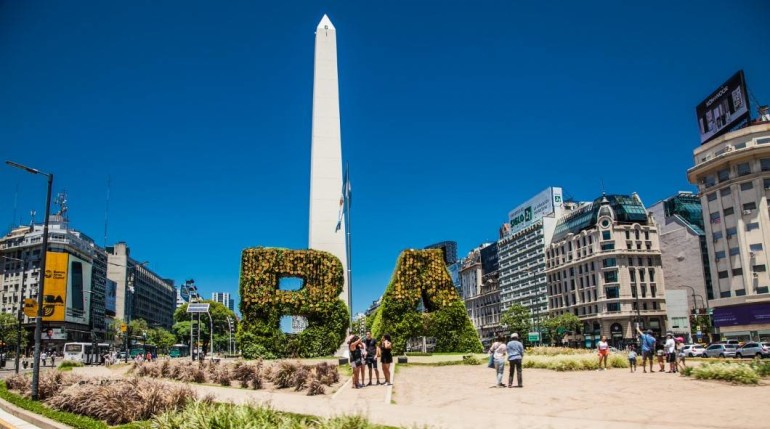Sponsored Listings:
In 2018, foreign tourism expenditure on goods and services increased by 30%. The growth was recorded by the hotel industry as well, which reported its highest occupancy rate since 2011.
Last year, the city of Buenos Aires saw the arrival of 2.7 million international tourists and closed with another consecutive year of growth. Foreign tourism expenditure on goods and services increased by 30% at fixed-value pesos, which represented extra revenues of US$12 billion. In total, tourism generated US$3 billion for the city: $2 billion from international tourists’ expenditure, while the rest of the figure consists of domestic tourism.
“Thanks to the national government’s connectivity policy, foreign tourism is growing like never before. And every tourist who arrives in Buenos Aires generates work for porteños: in hotels, bars, and restaurants, theaters, in all shops and businesses,” said Horacio Rodríguez Larreta, mayor of the city.
The countries with the highest tourist influx included: Brazil, Uruguay, the US, Chile, Colombia, Spain, Peru, and Italy. On average, each visitor had US$ 900 expenditure per trip, more than the average travel expense in South America, which amounts to US$ 798.
Additionally, tourism reported growth in markets due to the higher expenditure, such as the United States and Canada (3.3%), Europe (4.6%), and Asia (14.8%). The Buenos Aires government released an official report highlighting that British visitors from London increased by 31%, while Chinese arrivals from Amsterdam grew by 46%.
“Tourism is a vital engine for the growth and development of Buenos Aires. In 2018, it amounted to 3% of the Buenos Aires GDP. The impact it has on employment is enormous: in fact, 1 in 5 jobs generated globally in 2017 corresponds to tourism and that has a greater impact on cities,” said Fernando Straface, Secretary General and Secretary of Foreign Affairs.
In 2018, Buenos Aires recorded the highest hotel occupancy rate since 2011, with 59.4%. Faced with the strong increase, the Buenos Aires government approved a Promotion Regime for the Hotel Industry at the end of last year, a law with fiscal incentives to encourage the development, remodeling, and restructuring of the existing hotel market.
“The campaign is a key element because part of Buenos Aires’ hotel infrastructure is more than 30 years old. The law has the potential to remodel more than 70 hotels and generate about 2,000 direct jobs. We are taking different measures to promote competitiveness in the hotel industry so that the City of Buenos Aires makes the most of this opportunity,” said Gonzalo Robredo, president of the City Tourism Board.

Additionally, Buenos Aires introduced a unique product: a new line of credit loan called “Tourism City”, which provides up to US$ 10 million for the remodeling, expansion, improvement, and equipment of hotels. This credit, which has a subsidized rate established by the Secretariat of Tourism, has the most competitive fixed rate in the market (NAR 36%) and grants financing for up to 6 years.
As a complimentary offer, loans in Argentine pesos will be offered for the construction and remodeling of hotels with financing of up to 85% of the project, discounting of checks for SMEs with a fixed rate of 24% for a period of 120 days; a free checking account for 24 months and ‘posnets’ (payment modules for debit cards) discounted for 12 months.
In addition, Straface announced the creation of a Tourist Intelligence System, a site that uses metadata techniques to gather information such as the arrival, origin, and mobility of tourists, year-on-year variation, hotel occupancy, expenses, stay, overnight stays, and projected bookings, among other key variables for the industry.
“It is an initiative that will improve the information available to hotels, travel agencies, airlines, boards and associations, investors and entrepreneurs, and improve the quality of their decision-making in the industry. Any user can now access this data,” Straface highlighted. Additionally, the representative pointed out that Buenos Aires is the only city in Argentina, and one of the first in the world, to develop a tool with dynamic and interactive tourism statistics open to the public.
Source: tourism-review.com










